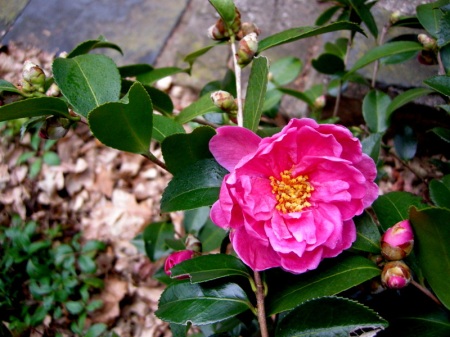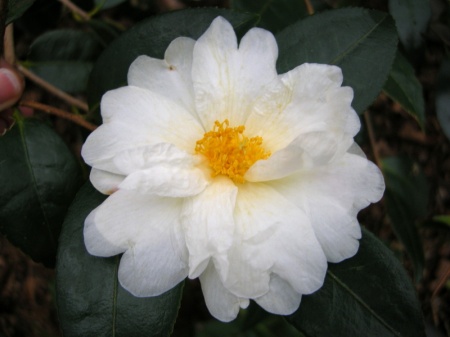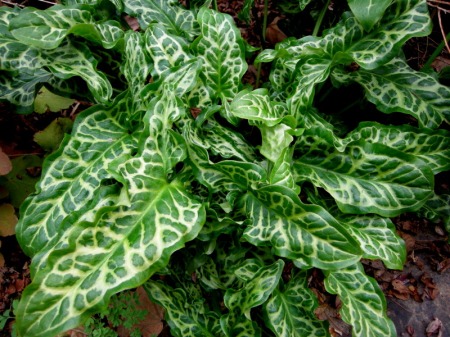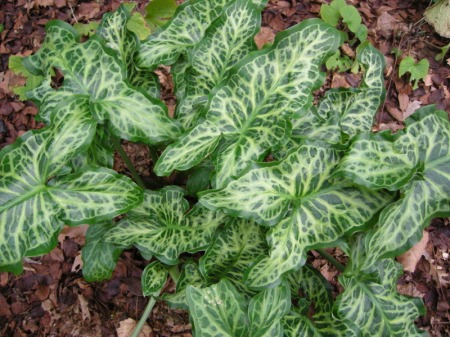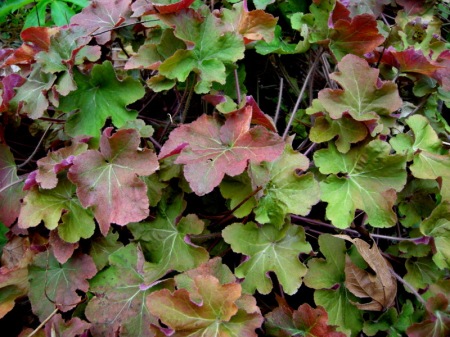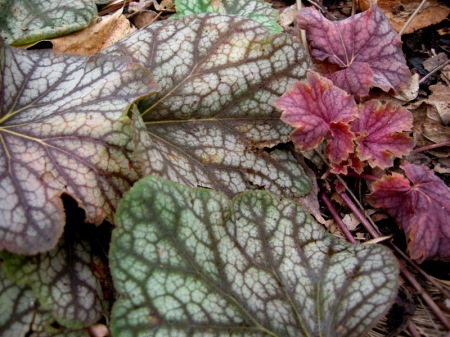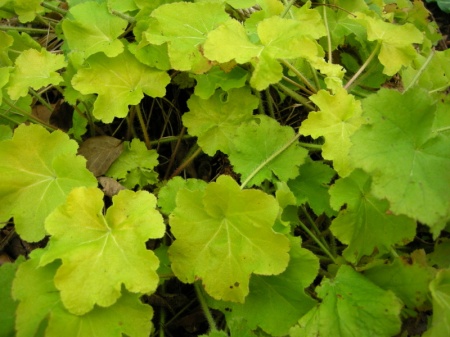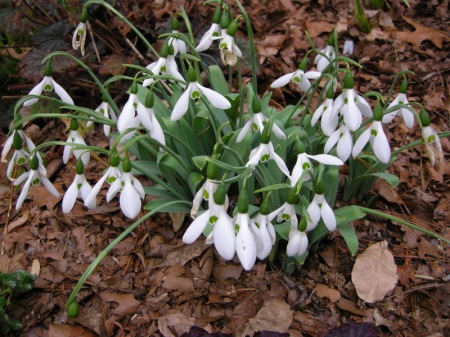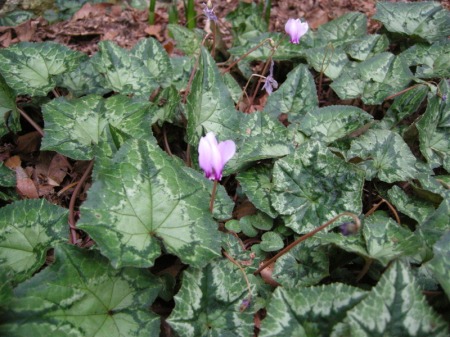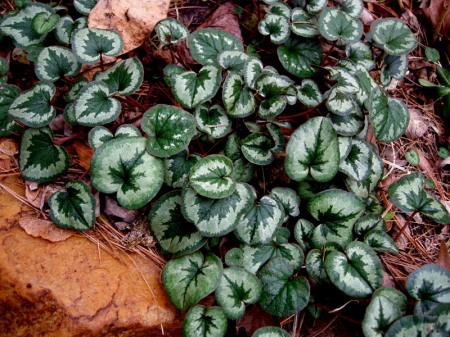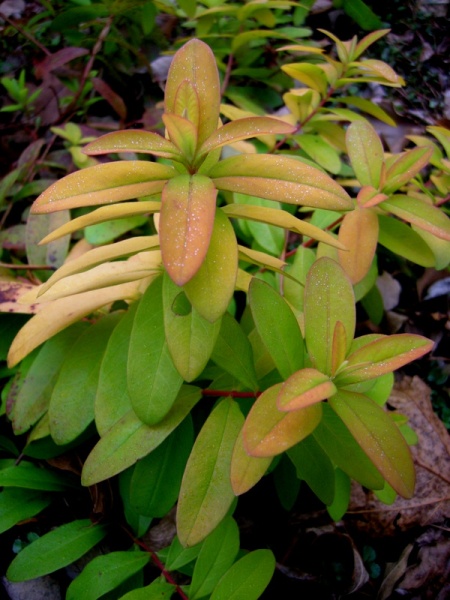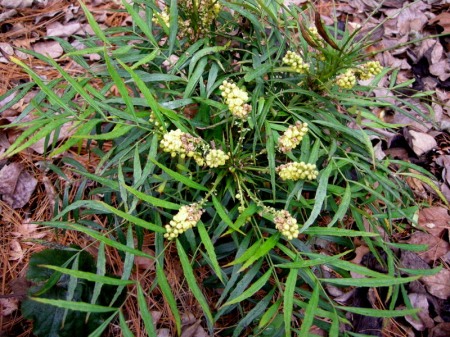 ‘Limelight’ hydrangea, native blue wood aster, and native brown-eyed Susan (Rudbeckia triloba) shine through October.
‘Limelight’ hydrangea, native blue wood aster, and native brown-eyed Susan (Rudbeckia triloba) shine through October.
For me, fall has three seasons, early, middle, and late, and they do not conform to the calendar definition of fall. Early fall plants perform in September, a month that is technically summer until the equinox. Mid-fall plants peak in October, and late fall plants grace November. As far as I am concerned, December is winter no matter what the calendar says. The first post in this series covered September bloomers, for details click here. This post features perennials and shrubs that make a daily walk through my garden worthwhile in October, even as the weather cools. The next post will feature plants for November.
Nursery News: Carolyn’s Shade Gardens is a retail nursery located in Bryn Mawr, PA, specializing in showy, colorful, and unusual plants for shade. The only plants that we ship are snowdrops and miniature hostas. For catalogues and announcements of events, please send your full name, location, and phone number (for back up use only) to carolyn@carolynsshadegardens.com. Click here to get to the home page of our website for catalogues and information about our nursery and to subscribe to our blog.
.
 As the weather cools in October, ‘Limelight’ hydrangea’s flowers take on this lovely pink hue.
As the weather cools in October, ‘Limelight’ hydrangea’s flowers take on this lovely pink hue.
.
 Some of my other favorite Japanese anemones like ‘September Charm’ and ‘Pamina’ may extend into October, but ‘Honorine Joubert’ is the queen, blooming throughout the month. It also has the best habit and most flowers of any Japanese anemone that I grow.
Some of my other favorite Japanese anemones like ‘September Charm’ and ‘Pamina’ may extend into October, but ‘Honorine Joubert’ is the queen, blooming throughout the month. It also has the best habit and most flowers of any Japanese anemone that I grow.
.
 Berries are very important in October, and none is more eye-catching than beautyberry, here ‘Early Amethyst’, an Asian variety.
Berries are very important in October, and none is more eye-catching than beautyberry, here ‘Early Amethyst’, an Asian variety.
.
 The unusual purple berries are elegantly set off by the lime green leaves. When the leaves drop in November, the berries persist.
The unusual purple berries are elegantly set off by the lime green leaves. When the leaves drop in November, the berries persist.
.
 I actually prefer the cluster form and color of native callicarpa berries, but Callicarpa americana may have hardiness issues in our zone. I lost two of my three established plants last winter. The third is huge and vigorous though.
I actually prefer the cluster form and color of native callicarpa berries, but Callicarpa americana may have hardiness issues in our zone. I lost two of my three established plants last winter. The third is huge and vigorous though.
.
 My ‘Red Dragon’ fleece flower bloomed beautifully this year, and the purple leaves still look great in October.
My ‘Red Dragon’ fleece flower bloomed beautifully this year, and the purple leaves still look great in October.
.
 October is the month for fall-blooming hardy cyclamen and the wonderful leaves remain gorgeous all winter (photo taken at Chanticleer).
October is the month for fall-blooming hardy cyclamen and the wonderful leaves remain gorgeous all winter (photo taken at Chanticleer).
.
 ‘Album’ is a white-blooming form of hardy cyclamen.
‘Album’ is a white-blooming form of hardy cyclamen.
.
 ‘Sinonome’ toad-lily is another outstanding October plant and continues full strength until the first frost. This photo was taken October 23, and plenty of unopened buds remain.
‘Sinonome’ toad-lily is another outstanding October plant and continues full strength until the first frost. This photo was taken October 23, and plenty of unopened buds remain.
.
 A close up of ‘Sinonome’s orchid like flowers.
A close up of ‘Sinonome’s orchid like flowers.
.
 Another toad-lily with a beautiful habit blooming in October at Welkinweir Estate Garden in Pottstown. There was no sign, but it may be Tricyrtis hirta ‘Variegata’.
Another toad-lily with a beautiful habit blooming in October at Welkinweir Estate Garden in Pottstown. There was no sign, but it may be Tricyrtis hirta ‘Variegata’.
.
 Native threadleaf bluestar shines again in October when it turns this gorgeous yellow-orange, here at Chanticleer.
Native threadleaf bluestar shines again in October when it turns this gorgeous yellow-orange, here at Chanticleer.
.
 Cimicifuga’s (actaea) soaring, beautifully scented candelabras are dramatic in October, here at the Scott Arboretum.
Cimicifuga’s (actaea) soaring, beautifully scented candelabras are dramatic in October, here at the Scott Arboretum.
.
 Tartarian aster takes over when all the other asters except native blue wood aster (see first photo) are done.
Tartarian aster takes over when all the other asters except native blue wood aster (see first photo) are done.
.
 Yellow corydalis blooms all season and continues on into November, while the blue flowers of autumn leadwort start in June and peak in September and October.
Yellow corydalis blooms all season and continues on into November, while the blue flowers of autumn leadwort start in June and peak in September and October.
.
Mid-October marks the start of the snowdrop and camellia season, two plants that carry me through the depths of winter and into spring. Although the variety broadens considerably in November, I want to show you the snowdrops and camellias that start the show:
.
 The fall-blooming snowdrop species, Galanthus reginae-olgae, sometimes called Queen Olga’s snowdrop because it was named for the Queen of Greece, always blooms by October 15. Shown here with my favorite lamium, ‘Shell Pink’, which flowers all season.
The fall-blooming snowdrop species, Galanthus reginae-olgae, sometimes called Queen Olga’s snowdrop because it was named for the Queen of Greece, always blooms by October 15. Shown here with my favorite lamium, ‘Shell Pink’, which flowers all season.
.
 Galanthus reginae-olgae ‘Tilebarn Jamie’ is an improvement on the straight species with bigger, rounded flowers and two flower stems per plant.
Galanthus reginae-olgae ‘Tilebarn Jamie’ is an improvement on the straight species with bigger, rounded flowers and two flower stems per plant.
.
 I am so thrilled that this spring, I finally found ‘Snow Flurry’ fall-blooming camellia to plant in my garden. It starts the camellia season off with a glorious show in mid-October.
I am so thrilled that this spring, I finally found ‘Snow Flurry’ fall-blooming camellia to plant in my garden. It starts the camellia season off with a glorious show in mid-October.
.
 ‘Lu Shan Snow’ is my oldest camellia and starts the third week of October.
‘Lu Shan Snow’ is my oldest camellia and starts the third week of October.
.
 ‘Long Island Pink’ is another early fall-blooming camellia starting in mid-October. I planted it last fall, and it sailed through our terrible winter to produce a large crop of flowers this fall.
‘Long Island Pink’ is another early fall-blooming camellia starting in mid-October. I planted it last fall, and it sailed through our terrible winter to produce a large crop of flowers this fall.
Carolyn
Nursery Happenings: You can sign up to receive notifications of catalogues, sales, and events at the nursery by sending your full name and phone number to carolynsshadegardens@verizon.net.
Carolyn’s Shade Gardens is a local retail nursery in Bryn Mawr, Pennsylvania, U.S., zone 7a. The only plants that we mail order are snowdrops and miniature hostas and only within the US.
If you are within visiting distance and would like to receive catalogues and information about customer events, please send your full name and phone number to carolynsshadegardens@verizon.net. Subscribing to my blog does not sign you up to receive this information.
Facebook: Carolyn’s Shade Gardens has a Facebook Page where I post single photos, garden tips, and other information that doesn’t fit into a blog post. You can look at my Facebook page here or click the Like button on my right sidebar here.
Notes: Every word that appears in orange on my blog is a link that you can click for more information. If you want to return to my blog’s homepage to access the sidebar information (catalogues, previous articles, etc.) or to subscribe to my blog, just click here.

















